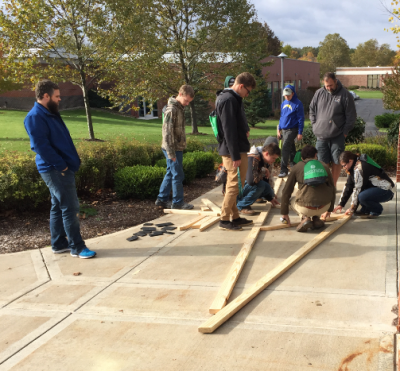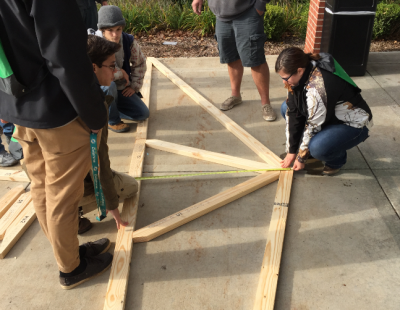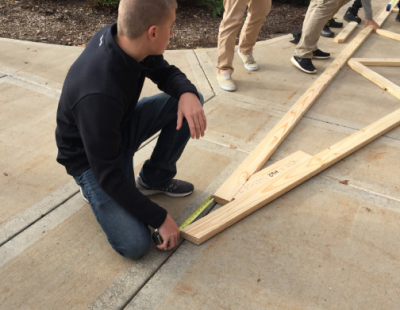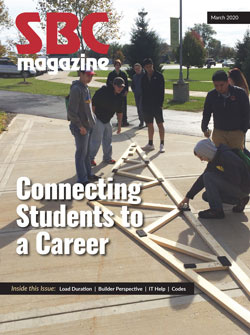Simulating On-the-Job Training Encourages Students
Simulating On-the-Job Training Encourages Students
“We started this truss building activity because we wanted to introduce students to structural building components and the opportunities for internships or careers that may interest them in the future,” says Shawnee Gunnett, a structural estimator at Big C Lumber Structural Building Components in Dowagiac, Michigan.

Besides being a fun activity for the students, Shawnee sees it as a great way to educate the students and give them a taste of the industry. “We were invited to come to Sawdust Day in 2017 at the local community college and I wanted to give the students a hands-on experience so they could see the whole process and see what they like, if it’s the design side looking at the design drawing or the production side and being more hands-on. Students in construction trades programs don’t always get to see what it’s really like, so this activity gives them that opportunity,” adds Shawnee.
After using the activity at Sawdust Day, Big C Lumber continued to use it with high schoolers that came through on plant tours. The students are broken into smaller groups of six to eight and then compete to see who can correctly build the truss the fastest according to their design drawing. “The students like the competition and it allows them to have to think quickly and figure out how to set up the truss,” explains Shawnee. “It’s neat to see them working as a team.” The winning team receives candy bars and a piece of Big C Lumber swag.

The company mainly conducts this activity with high school students, but recently found another outlet to use it with middle schoolers that participate in the Van Buren Tech Career Camp. “We’ve done this activity for the past couple of years with success in the high school, so we tried it for the first time this summer with middle school students in the Woodworking Wonders Program,” shares Shawnee. “It proved to be a great teambuilding exercise for younger students, too.”
It’s an easy activity because once it’s built you can modify it for the skill-level of the students and reuse the same materials. “We’ve made some changes with input from the students,” explains Shawnee. “We’ve had suggestions to make it more challenging by adding random pieces that didn’t belong or ideas to make it more complex for older students.

“Two of our estimators are current students that completed their internships and are now working with us,” says Shawnee. “It’s cool to see them transition into a bigger position and work to fit in their hours while they’re still students.”
An activity like this can pique a student’s interest and motivate them to join the industry in the future. “This activity encourages them, shows them a bit of everything, and gets them involved,” says Shawnee. “My biggest thing is to show them a little bit of everything that you can do. It really stands out, and if you can make an imprint on them, that’s huge.”
To read more about Big C Lumber’s relationship with local schools, read previous articles “What’s in Your Backyard?” and “Rely on Relatable Recruiters.” Visit SBCA’s website to view these articles and take advantage of Shawnee’s outline to start your own truss activity with students.
Another Truss Activity Success Story
Shelter Systems Limited in Westminster, Maryland, has had similar success in recruiting students with truss building activities. In 2016, Randy Rickels, Shelter’s safety officer, visited an entry-level class to introduce students to structural building components and brought with him a truss activity for the students to complete.
The activity was a hit with the students and has led to repeat visits with the local high school. Getting involved with schools has also resulted in nine recruits that are currently working in production.
To learn more, read the WFD case studies “How Can You Quickly Get Nine Quality Employees?” and “Show Them You Care (Bring Pizza if Necessary)” to explore how Shelter Systems has incorporated the truss building activity into their recruiting efforts.

